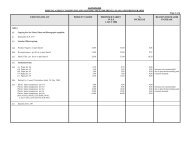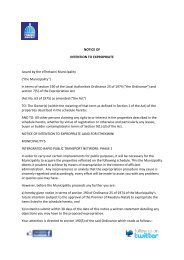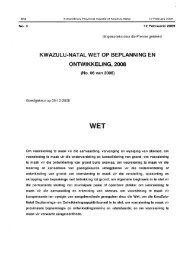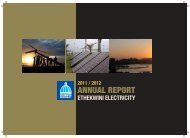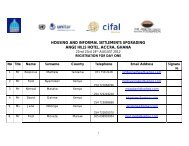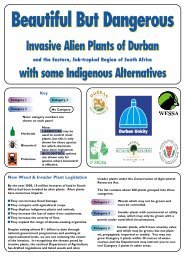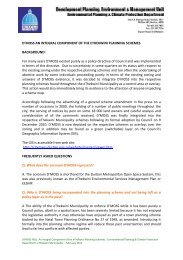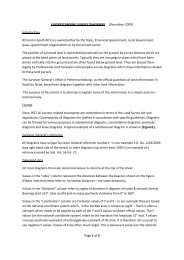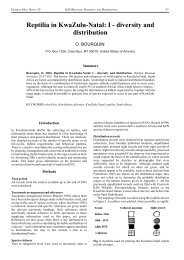Mullin, S. K., Taylor, P. J. & Pillay, N. 2004. Skull size and ... - Durban
Mullin, S. K., Taylor, P. J. & Pillay, N. 2004. Skull size and ... - Durban
Mullin, S. K., Taylor, P. J. & Pillay, N. 2004. Skull size and ... - Durban
Create successful ePaper yourself
Turn your PDF publications into a flip-book with our unique Google optimized e-Paper software.
MULLIN_08 13/08/04 12:45 Page 15<br />
P R O O F<br />
<strong>and</strong> 86-Beira) as separate from Cluster B containing<br />
the majority of the East African OTUs. Dasymys<br />
montanus (C) did not group with other East African<br />
material, emphasizing its distinct cranial features,<br />
especially since it did not even cluster with other<br />
material from the Ruwenzori Mountains (Minunga,<br />
OTU 45) which is found at a lower altitude than<br />
D. i. montanus. Cluster D represents the two<br />
Malawian OTUs (from the Zomba <strong>and</strong> Mulanje<br />
Plateaux, OTUs 81 <strong>and</strong> 82), which consistently<br />
grouped with Zambian material in previous figures.<br />
On the CVA plots, material from Ethiopia,<br />
Ghana <strong>and</strong> Burkina Faso separated on the first<br />
African Dasymys systematics<br />
FIG. 6. – CVA plot based on (a) Ventral weight matrix of specimens from Burkina Faso, Ghana, Ethiopia <strong>and</strong> South Africa; (b) Ventral<br />
weight matrix of specimens from Cameroon, Burundi, Nigeria, Rw<strong>and</strong>a <strong>and</strong> Democratic Republic of Congo; (c) Traditional measurements<br />
of specimens from Ethiopia, Sudan, Kenya, Burundi, Rw<strong>and</strong>a, Tanzania <strong>and</strong> Ug<strong>and</strong>a; (d) Traditional measurements of specimens<br />
from Angola, Malawi, Mozambique, Nigeria <strong>and</strong> Tanzania. , West African D. rufulus; 〈, D. foxi, π, Ethiopia <strong>and</strong> Sudan; , D. i. griseifrons;<br />
?, Cameroon, Central African Republic, Congo, Democratic Republic of Congo; σ, East Africa; ∠, D. montanus; , Malawi,<br />
Mozambique <strong>and</strong> Tanzania; τ, D. incomtus from Angola; υ, D. nudipes; θ, Limpopo <strong>and</strong> Mpumalanga Provinces, South Africa; ϖ,<br />
KwaZulu-Natal Province, South Africa; ÷, D. i. capensis. OTUs are defined in Table 1.<br />
MAMMALIA • 2004 • 68 (2)<br />
axis, as did D. i. capensis (Wilks λ=0.000, p < 0.01;<br />
Fig. 6A). The two Ethiopian OTUs (29 <strong>and</strong> 30)<br />
appeared to be more similar to western African<br />
than to southern African material. South African<br />
OTUs overlapped on the first axis, but separated<br />
on the second axis with the exception of OTU<br />
107 from Mfongosi (KwaZulu-Natal Province,<br />
South Africa), which appeared to be more similar<br />
to Limpopo Province material. Fig. 6B indicated<br />
that D. foxi was similar to material from the other<br />
two Nigerian OTUs representing D. rufulus<br />
(Wilks λ =0.000, p < 0.01). A separation was<br />
seen again within the DRC on the first axis<br />
15


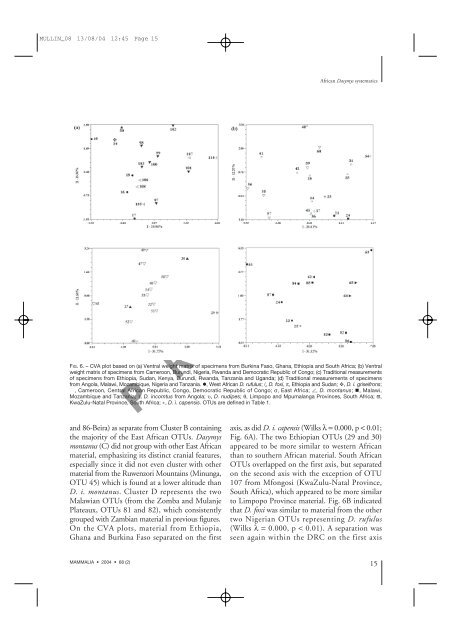
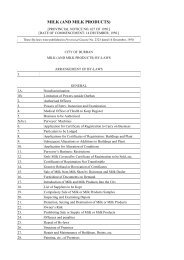
![INK Environmental Sustainability Booklet [19 MB] - Durban](https://img.yumpu.com/22025104/1/190x136/ink-environmental-sustainability-booklet-19-mb-durban.jpg?quality=85)

